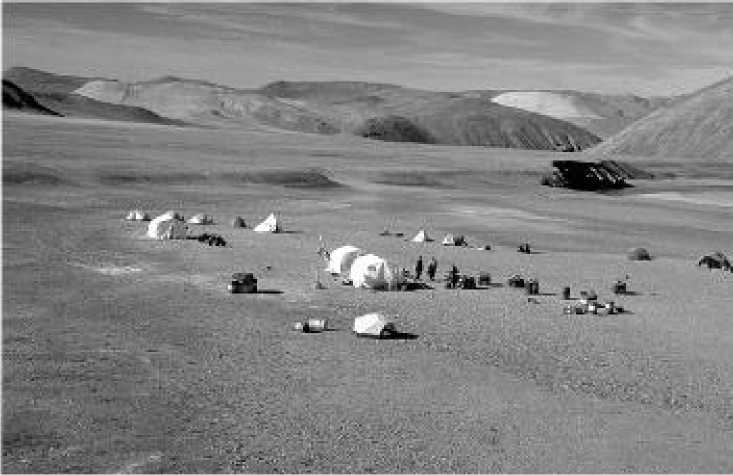WJ Clancey — Visualizing Practical Knowledge
promoting learning. I illustrate the ethnographic approach of human-centered computing
in a case study.
Ethnographic study of the Haughton Crater Mars analog expedition
Haughton crater is located near the coast on Devon Island, about 500 miles north of the
Arctic Circle and 900 miles south of the North Pole. The crater is about 20 km in
diameter and was formed by a meteorite impact about 24 million years ago. The
Haughton-Mars Project (HMP) in 1998 was an expedition to Haughton Crater, organized
by Pascal Lee, a NASA astrogeologist. The crater was chosen because its breccia and
permafrost-created formations are similar to what we see in photographs of Mars. Thus,
Haughton’s icy crater environment is a “Martian analog.” Twenty four people
participated in the HMP-98 expedition, arriving in 3 phases from June through July.
During the ten days of phase 3, I carried out an ethnographic study of the expedition’s
activities. This included extensive photography. Figure 1 shows an overview of the base
camp, which is a good place to get started in understanding how an ethnographer sees the
world.

Figure 1: Base camp of Haughton-Mars Project 1998
Notice in Figure 1 that the tents are not placed randomly. They are in a curved line, with
two larger tents in the middle. People align themselves to boundaries, they find natural
More intriguing information
1. The name is absent2. L'organisation en réseau comme forme « indéterminée »
3. Revisiting The Bell Curve Debate Regarding the Effects of Cognitive Ability on Wages
4. Firm Creation, Firm Evolution and Clusters in Chile’s Dynamic Wine Sector: Evidence from the Colchagua and Casablanca Regions
5. The name is absent
6. The name is absent
7. Wirkung einer Feiertagsbereinigung des Länderfinanzausgleichs: eine empirische Analyse des deutschen Finanzausgleichs
8. The name is absent
9. The name is absent
10. The name is absent